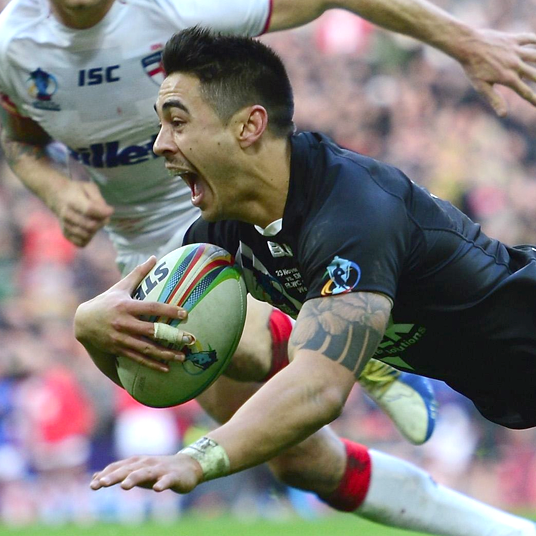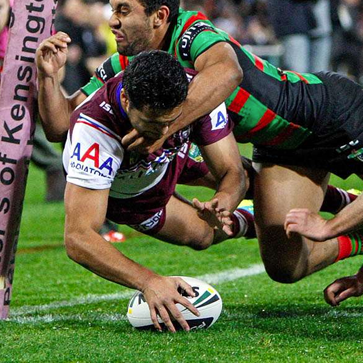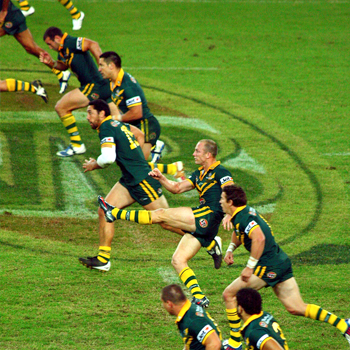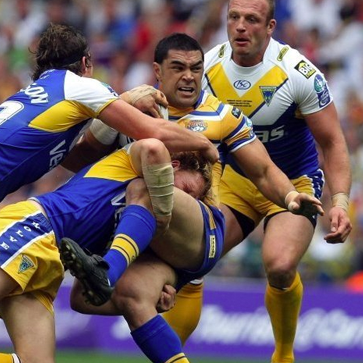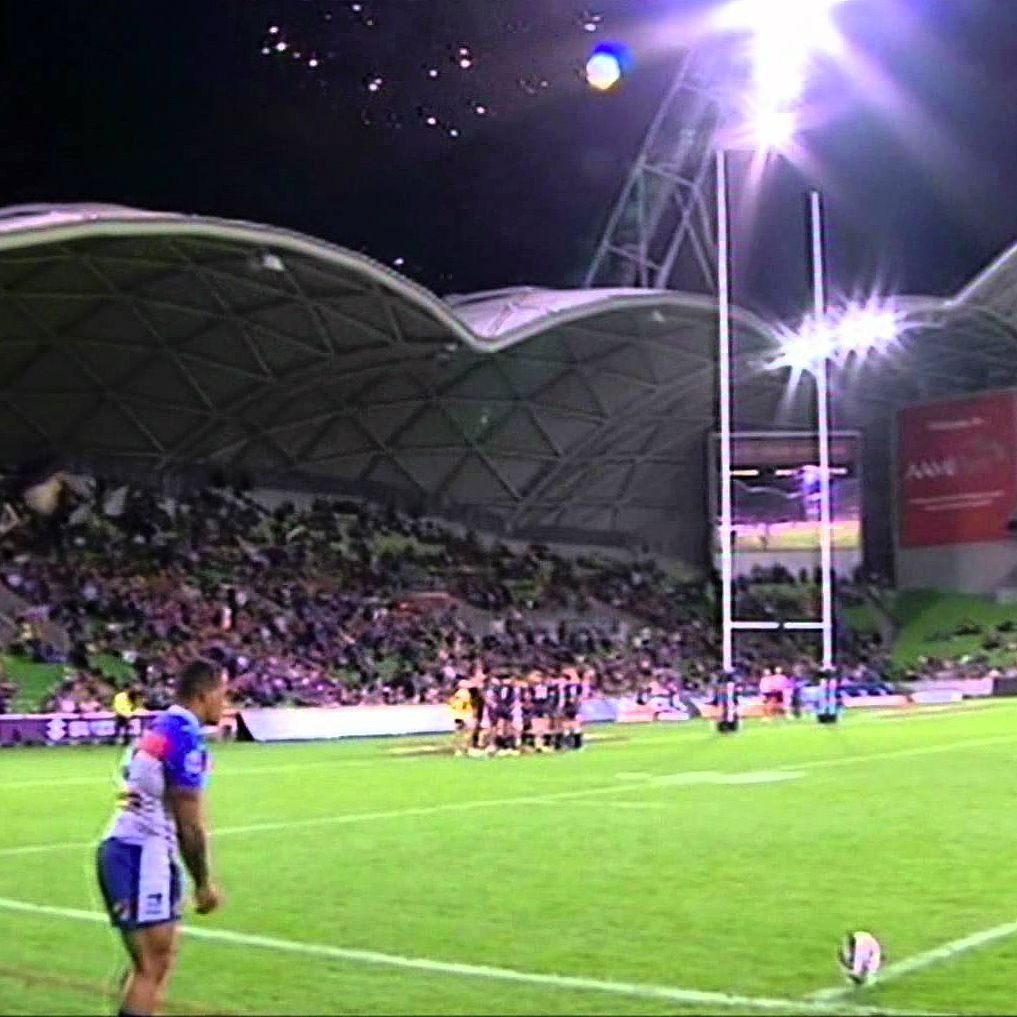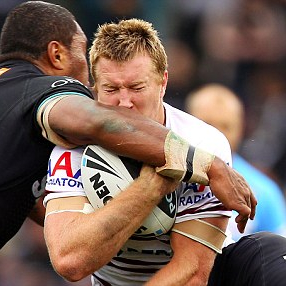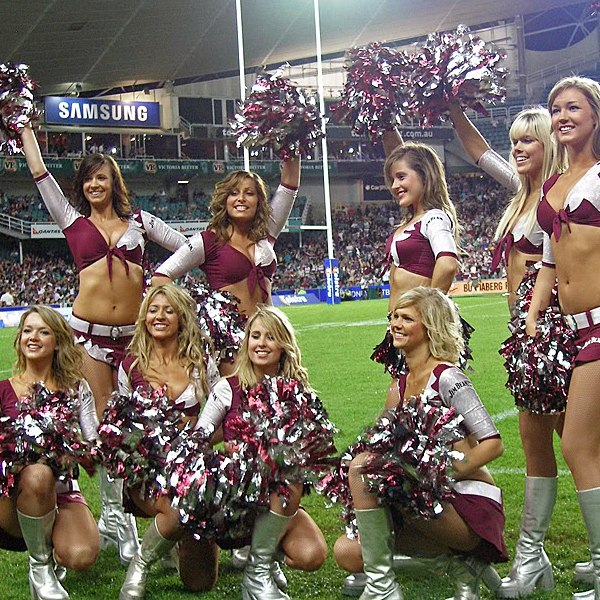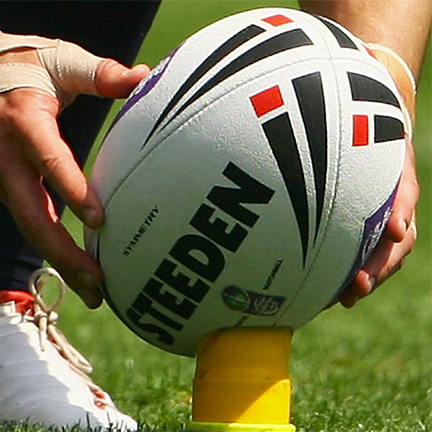PLAY THE BALL – (Snap) Similar to a snap in the NFL by initiating play. When the ball carrier is tackled or stopped from moving forward, he stands up and places the ball on the ground and rolls it back with his foot, so the “dummy half” can pick it up and pass or run with the ball.
40/20 RULE – (Field position kick) A rule that if a player manages to bounce a kick in general play from inside his own 40 yard line, into touch (out of bounds) inside his opponents 20 yard area. This gives the offense possession and 6 more tackles in an attacking position. Kicks that are not 40/20 that go “into touch” (out of bounds) result in the opposing team getting position with scrum feed.
KNOCK-ON – (Fumble) Any time the ball is fumbled forward. Results in a scrum with the defense being awarded the feed.
DUMMY-HALF – (Acting as a Quarterback) Is the offensive action of picking up and distributing the ball after the play has occurred. This is not a permanent position, any player can be the dummy half at any point in the game; however is usually manned by the hooker.
IN TO TOUCH – (Out of Bounds) When the ball or player travels out of bounds it is considered to be in touch.
SCRUM – (Rugby Owns this One) Each team will create a six player triangle, 3 players in front, 2 in the middle, and 1 in the rear, and fight for the ball that is rolled into the middle. There are multiple rules infractions that can result in a scrum.
OFF-LOAD – (Pass/Hand-off) For a player to pass the ball to another.
CHANGE-OVER – (Change of Possession) A change-over is a turn-over. This is when the attacking side loses possession of the ball.
HEAD AND FEED – (Control of feeding the ball into the scrum) A team is said to have the head and feed of a scrum. The feed refers the action of placing the ball into the scrum.
